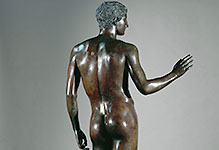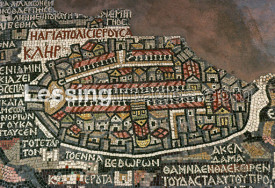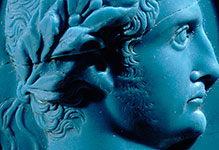
Antiquity
Ancient Egypt, Ancient Greece, Imperial Roman Period, Ancient Middle East.

#03030142
Clay plaque showing a banqueter, from Uruk (Warka), 1st CE. The plaque shows a...

#03030143
Queen's lyre from Ur, southern Iraq, 2600-2400 BCE. Stringed instrument with a b...

#03030144
Silver fluted tumbler from Ur, southern Mesopotamia, early dynastic period,2.60...

#03030145
Stone vessel from Ur,Mesopotamian,southern Iraq. Dis- covered in the grave of Qu...

#03030146
Gold cup from Ur,Mesopotamia,southern Iraq, 2.600 - 2.400 BCE. Found on the floo...

#03030147
The silver object was discovered in the cemetery at Ur, early Dynastic period, 2...

#03030148
Plaque depicting King Eannatum, around 2450-2300 BCE. Fragment of a stone plaque...

#03030149
Juglet from the Middle Euphrates region, Syria, Amorite, 2400-2000 BCE. The jug...

#03030150
Lion's head from the temple of Ninhursag, a mother goddess "lady of the steppe...

#03030151
Stone mace head, possibly from Tello (ancient Girsu), southern Iraq, Kingdom of...

#03030152
Terracotta plaque showing a bull-man holding a post, Mesopotamian, Old Babylonia...

#03030155
Clay mask of the demon Humbaba, 1800-1600 BCE. One method for predicting the fut...





